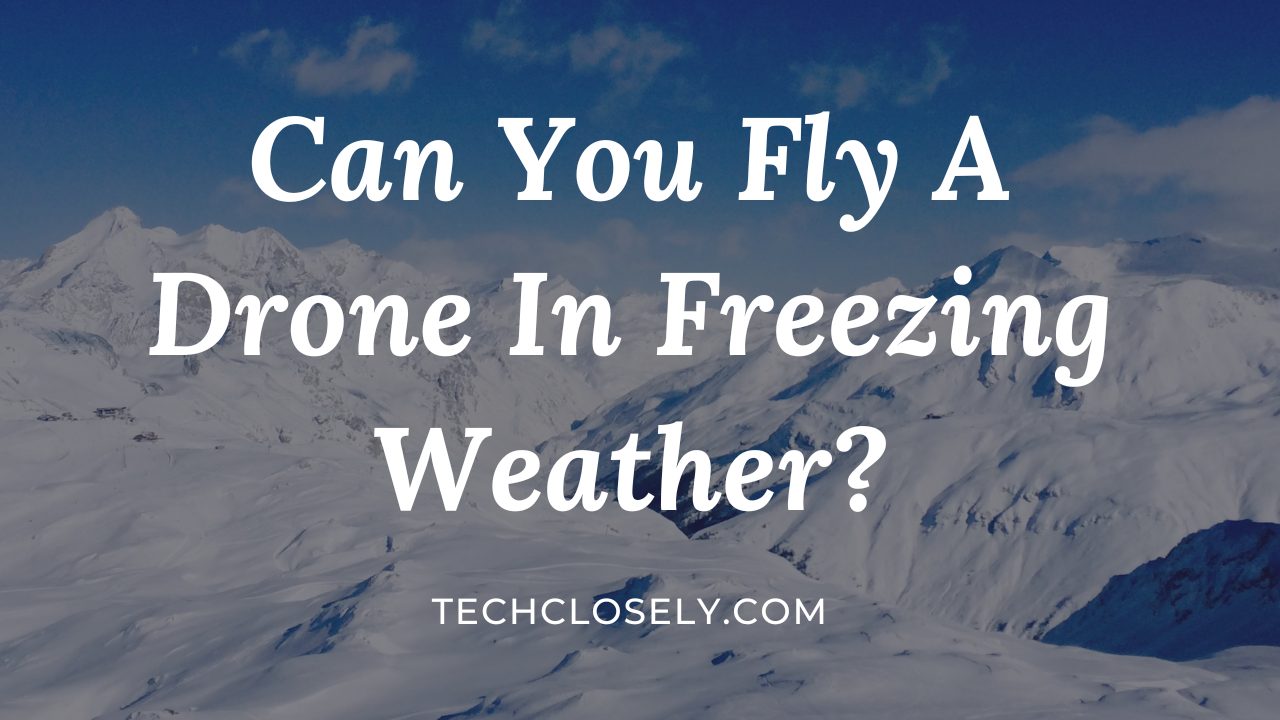Can You Fly A Drone In Freezing Weather?
Yes, you can fly a drone in freezing weather. However, cold temperatures can impact battery performance, reduce flight time, and affect the drone’s internal sensors. It’s essential to keep batteries warm, monitor drone health, and be cautious of moisture or ice buildup to ensure safe and successful flights.
Below we’ve discussed all those issues and tips when flying drone in a cold weather.
The Impact of Cold Weather on Drone Performance
Drones, like many electronic devices, are sensitive to extreme weather conditions, especially cold temperatures.
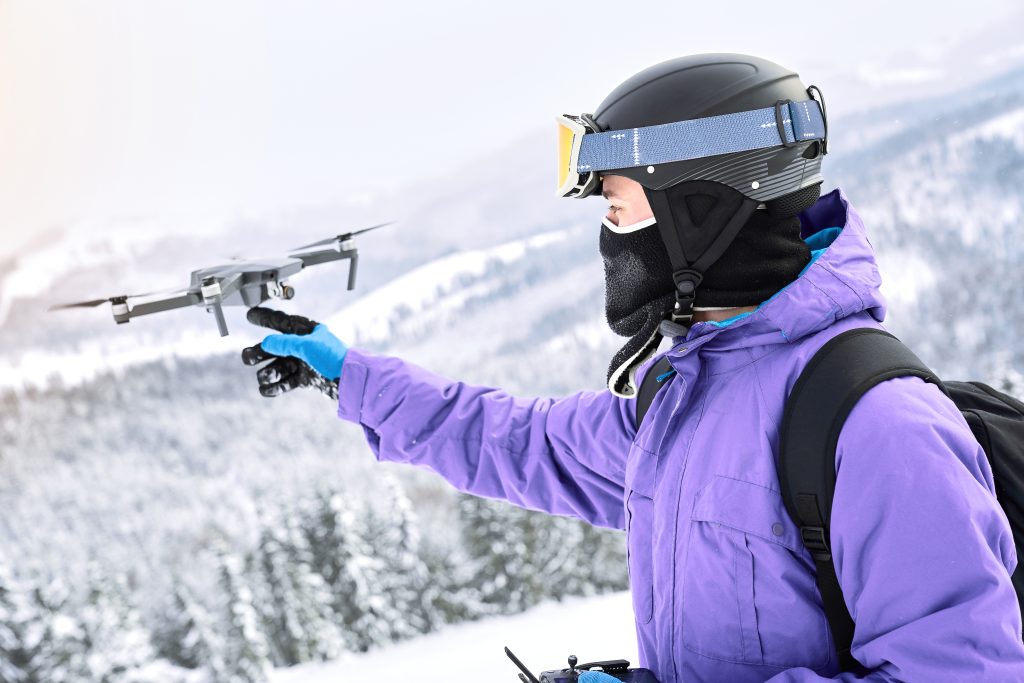
Firstly, cold weather significantly impacts battery life. Batteries rely on chemical reactions to produce power, and these reactions slow down in colder temperatures. This means your drone’s flight time might be reduced, requiring more frequent battery changes or recharges. It’s always a good idea to keep your batteries warm before use and monitor their charge levels during flight.
Additionally, the cold can affect the drone’s internal sensors and motors. These components might not function as efficiently, leading to less stable flights. In some cases, drones might even give false readings or experience glitches.
Cold weather can affect the GPS signal. It’s crucial to ensure that the drone has a strong GPS signal before taking off.
Moisture is another concern. Transitioning from a warm indoor environment to the cold outdoors can cause condensation to form on the drone. This moisture can be harmful to the electronic components.
Lastly, the physical properties of materials can change in cold weather conditions. Plastic parts might become more brittle, increasing the risk of damage during flights or landings.
Despite knowing all the possible consequences of flying a drone in cold weather, if you still want to fly a drone in the cold weather condition, here are the steps to do so:
Importance of Checking the Weather Forecast
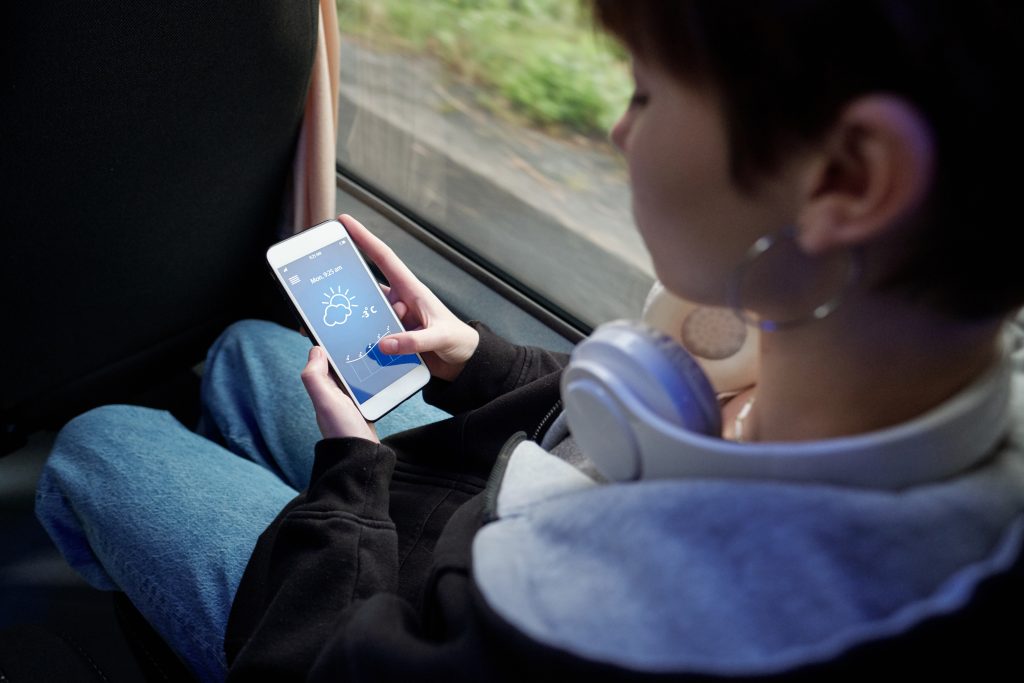
Drones have revolutionized the way we capture moments, survey landscapes, and even deliver packages. But with this advanced technology comes the responsibility of safe operation, and a significant part of that safety hinges on understanding the weather.
The weather isn’t just about whether it’s sunny or rainy; it’s a complex system that can greatly influence a drone’s performance. Here’s why checking the weather forecast is paramount:
- Wind Conditions: Drones, especially lighter models, can be significantly affected by wind. A sudden gust can alter its course or, in extreme cases, cause it to crash. The forecast provides insights into wind speeds and gusts, helping pilots decide if it’s safe to fly.
- Temperature Fluctuations: Cold weather can impact battery performance, reducing flight time. Conversely, hot conditions might lead to overheating. Knowing the day’s temperature range can help in planning the flight duration and ensuring the drone’s longevity.
- Precipitation: Rain, snow, or even mist can be harmful. Water can damage the electronic components, and icy conditions can hinder propeller movement. A quick check on the likelihood of precipitation can prevent potential damage.
- Visibility: Fog or low-hanging clouds can reduce visibility, making it challenging to navigate and increasing the risk of collisions.
Keeping Batteries Warm
It’s crucial to keep your batteries warm in the cold weather. Given the challenges cold weather poses, it’s crucial to take measures to keep your drone batteries warm and in optimal condition. Here are some tips to do so:
- Car Heating: If you’re traveling to your drone flying location by car, one of the simplest ways to keep your batteries warm is by placing them near the car’s heater vents. The warm air from the car’s heating system can help maintain the battery’s temperature.
- Battery-Operated Warmers: There are battery-operated warmers available in the market, specifically designed to keep drone batteries warm. These are especially useful if you’re out in the field and don’t have access to a car.
- Hand Warmers: Hand warmers, which are often used by outdoor enthusiasts in cold weather, can be an effective and portable solution. Simply placing a hand warmer next to your drone battery can help maintain its temperature.
- Body Heat: An age-old method that still works wonders. If you’re out and about, simply storing the batteries in an inner pocket close to your body can help keep them warm, thanks to your body heat.
- Let the Drone Acclimate: Before flying, it’s a good idea to let the drone acclimate to the outside cold temperature. This doesn’t mean letting the batteries get cold, but rather allowing the drone’s body to adjust to the cold to prevent issues like snow melting on it and causing moisture buildup.
- Avoid Ground Takeoffs in Snow: Taking off from snowy ground can kick up snow onto the drone, potentially wetting and damaging the batteries. Consider hand launching or using a landing pad.
Safe Takeoff and Landing
When using your drone in freezing weather, you should also give attention to safe takeoff and landing your drone. Below are the methods to do that:
1. Hand Launching and Hand Catching: One of the safest methods to avoid snow interference is to hand launch and hand catch the drone. By doing this, you eliminate the risk of snow getting thrown up by the drone’s propellers. However, it’s essential to be cautious and familiar with the technique to avoid injuries.
2. Hand Launching: Hold the drone firmly with one hand, ensuring the propellers are unobstructed. On the other hand, initiate the takeoff. Once the propellers start, release the drone into the air.
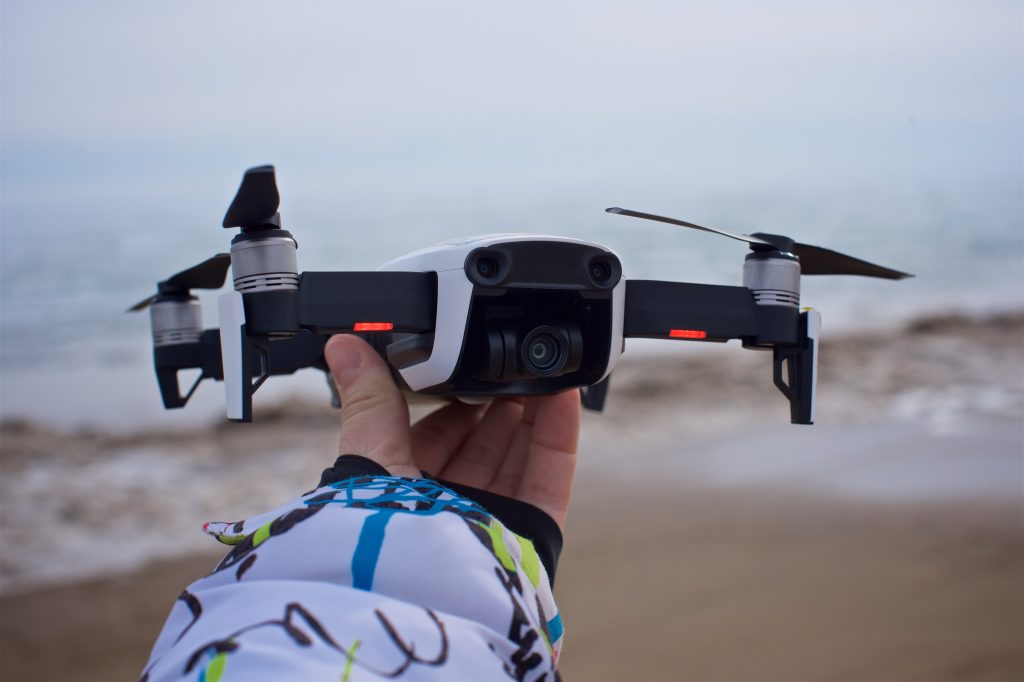
3. Hand Catching: As the drone approaches landing, extend one hand flat and allow the drone to descend slowly onto it. Once stable, turn off the propellers.
4. Using a Landing Pad: A landing pad provides a flat and clean surface for the drone to take off and land. It ensures that the drone remains above the snow level, reducing the risk of snow getting thrown up. It’s a portable and convenient solution, especially in deep snow conditions.
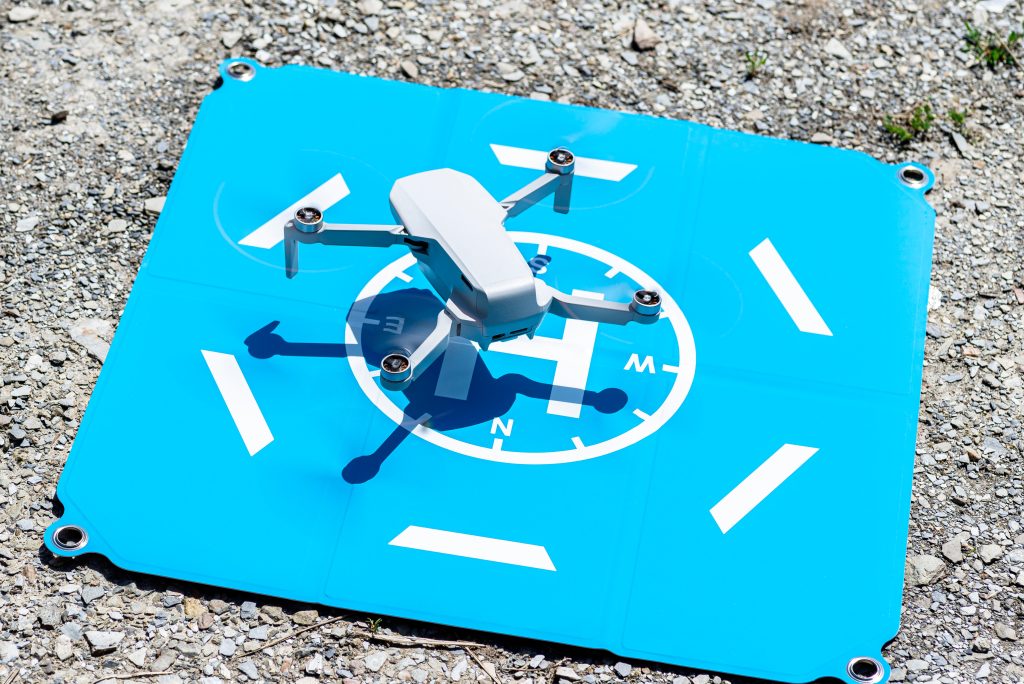
5. Using a Backpack as a Flat Surface: If you don’t have a landing pad, a backpack can serve as an alternative. Lay the backpack flat on the snow to create a makeshift takeoff and landing zone. Ensure the surface is stable and free from any obstructions.
Protecting the Drone’s Camera in the Snow
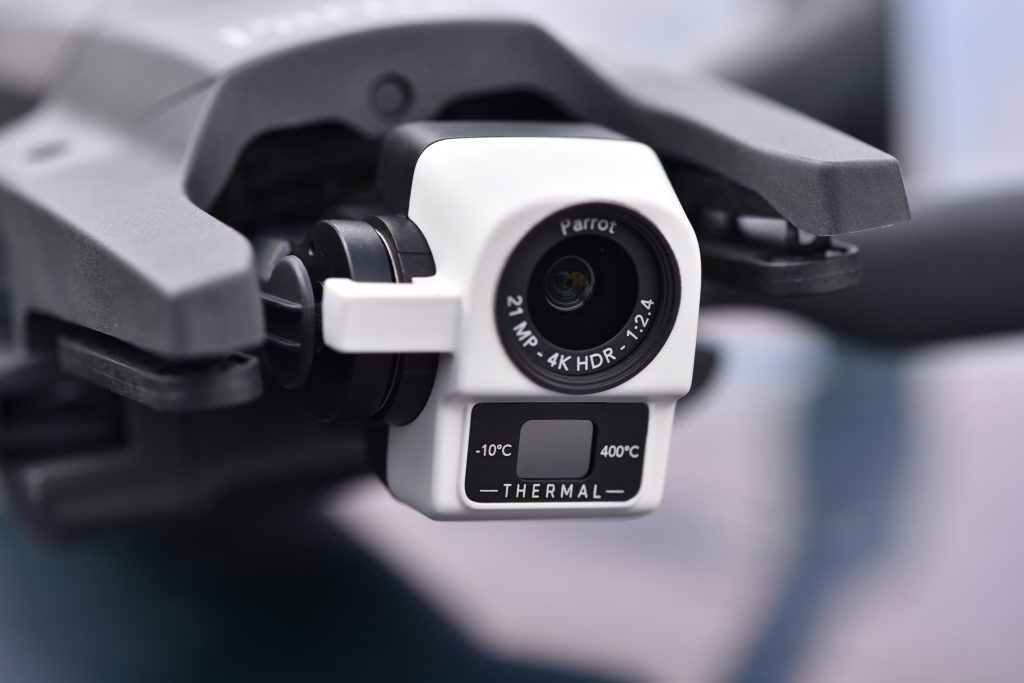
Capturing the serene beauty of a snow-covered landscape with a drone is a dream for many enthusiasts. However, snow presents a unique challenge: it can stick to the camera lens, compromising the quality of your footage and potentially damaging the camera.
The Challenge: When flying in snowy conditions, snowflakes can adhere to the camera lens. This not only obstructs the view but can also lead to moisture buildup, which is detrimental to the camera’s health.
Tips for Keeping the Camera Clear
- Directional Flying: One effective method to prevent snow from sticking to the lens is to fly the drone backward or sideways relative to the direction of snowfall. This reduces the direct impact of snowflakes on the lens and helps in keeping it clear.
- Regular Checks: During your flight session, take periodic breaks to check the lens for any snow buildup. Gently clean off any snow or moisture using a soft cloth.
- Protective Accessories: Consider investing in lens hoods or protective covers designed for drones. These can shield the camera from direct snowfall.
The Importance of Keeping Hands Warm
Your hands are the primary connection to your drone through the controller. Cold hands can become stiff and less responsive, making it difficult to execute precise maneuvers or respond quickly to changing conditions. Moreover, prolonged exposure to cold can lead to numbness, reducing your tactile feedback from the controller’s sticks and buttons.
Gloves Suitable for Drone Piloting
If you are a drone pilot looking for gloves recommendations, here are the Gloves you can keep in your mind.
- Touchscreen Compatible Gloves: Modern drones often rely on apps and touchscreen interfaces for advanced features. Look for gloves that allow you to interact with touchscreens without removing them.
- Thin, Insulated Gloves: Thick gloves can be cumbersome and might reduce your dexterity. Opt for gloves that offer a balance between warmth and flexibility, ensuring you can feel the controller’s nuances.
- Fingerless Gloves: These provide a compromise, keeping the bulk of your hands warm while leaving your fingertips free for precise control.
- Heated Gloves: Battery-operated heated gloves can provide consistent warmth, especially during extended flight sessions in extreme cold.
Capturing Stunning Winter Imagery with Drones

Winter offers a magical canvas for drone enthusiasts. The pristine white snow, the bare trees with a hint of frost, and the serene landscapes can transform ordinary locations into winter wonderlands. Capturing these moments from a drone’s eye view can be both challenging and rewarding.
The Unique Beauty of Winter Landscapes from a Drone’s Perspective:
From a drone’s vantage point, winter landscapes unfold in ways that are often unseen from the ground. Frozen lakes become giant mirrors reflecting the sky, snow-covered fields turn into abstract patterns, and even everyday scenes, like a neighborhood street, can look enchanting under a blanket of snow. The low angle of winter sunlight can cast long shadows, adding depth and drama to your shots.
Tips for Getting the Best Shots in Snowy Conditions
- Golden Hours: Just like in other seasons, the hours during sunrise and sunset in winter can offer soft, golden light. This can add a warm hue against the cool blue and white tones of snow.
- Contrast is Key: Snow can act as a giant reflector, illuminating subjects from all angles. Look for contrasts, like dark trees against a white backdrop, to make subjects stand out.
- Mind the White Balance: Snow can sometimes appear blue in photos, especially in the shade. Adjusting your drone’s white balance settings can help ensure that snow appears true to its natural color.
- Play with Altitudes: While high-altitude shots can capture vast snow-covered landscapes, flying lower can reveal intricate patterns in the snow, like animal tracks or the texture of frozen water bodies.
Winter provides a unique opportunity to capture nature in one of its most serene forms. With a drone, you can explore this beauty from new heights and angles. With the right techniques and precautions, you can bring out the best of winter’s charm in your aerial imagery.
Post-Flight Care
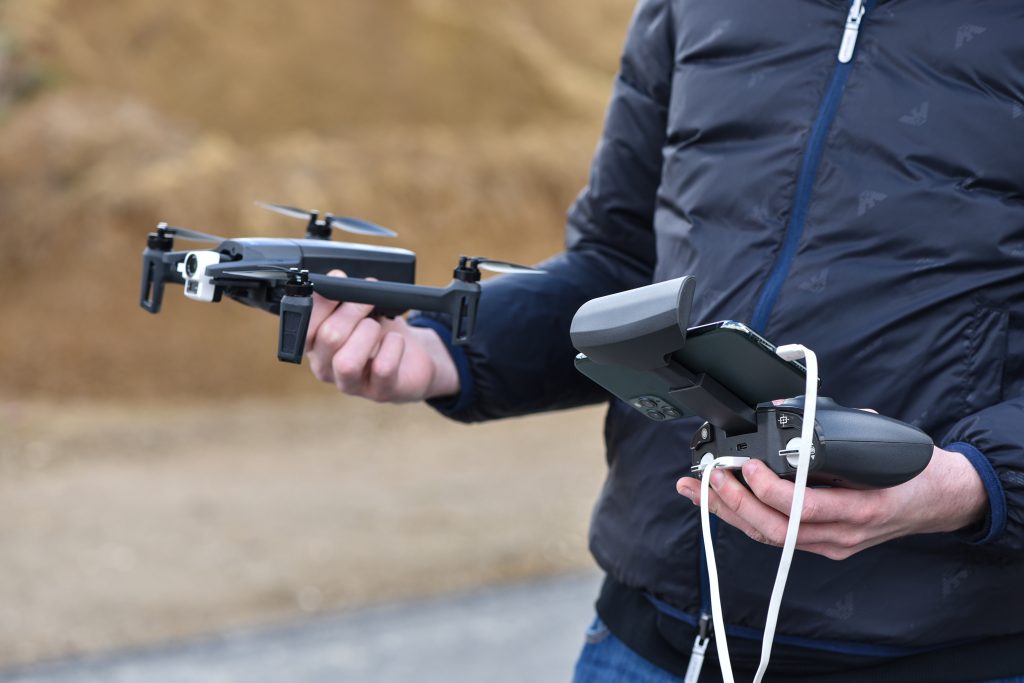
Flying a drone in cold weather conditions can be an exhilarating experience, capturing the serene beauty of winter landscapes. However, the cold can also pose challenges to your drone’s health.
Just as you wouldn’t leave your smartphone out in the cold for extended periods, your drone also needs some TLC after braving the chilly skies. Here’s how to ensure it remains in top condition:
1. Importance of Letting the Drone Acclimatize to Room Temperature:
After a winter flight, it’s crucial to let your drone gradually return to room temperature. This is because sudden cold temperature to warm temperature changes can cause condensation inside the drone, which can damage its internal components.
- Gradual Transition: Instead of immediately placing your drone in a warm environment, let it sit in an intermediary space, like a garage, for a while. This allows it to adjust to the temperature difference slowly.
2. Check for Moisture:
Snow and frost can introduce moisture to your drone. After your flight, inspect your drone for any signs of moisture, especially around the motors and battery compartment. Use a soft cloth to wipe away any visible moisture.
3. Battery Care:
Cold can affect battery performance. Once you’re done flying, remove the battery from the drone. Before storing it, ensure it’s at its optimal storage charge, usually around 50-60%. This helps in prolonging the battery’s lifespan.
4. Clean the Camera Lens:
Snowflakes or frost might have settled on the camera lens during the flight. Gently clean the lens with a soft microfiber cloth to ensure clear shots for your next flight.
5. Inspect Propellers:
Cold temperatures can make materials more brittle. Check the propellers for any signs of cracks or damage. It’s a good practice to replace them if they show any signs of wear.
6. Store in a Dry Place:
Always store your drone in a dry and cool place. If you suspect that your drone might have been exposed to a lot of moisture, consider placing it in a bag with silica gel packets to draw out any residual moisture.
Taking care of your drone after winter flights ensures its longevity and optimal performance. A little post-flight care can go a long way in keeping your drone ready for its next winter adventure.
FAQ
Can You Fly A Dji Drone In The Snow?
Yes, you can fly a DJI drone in the snow. However, cold temperatures can impact battery life and performance. You should be flying your drone in temperatures below 0°C (32°F).
Do drones require any special calibration for cold weather?
No specific calibration is needed, but always ensure a strong GPS signal and check all systems before takeoff.
Is it safe to fly a drone during snowfall?
Flying during snowfall can introduce moisture to the drone, potentially damaging its components. It’s best to avoid flying in heavy snow.

